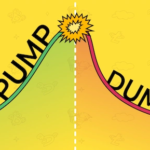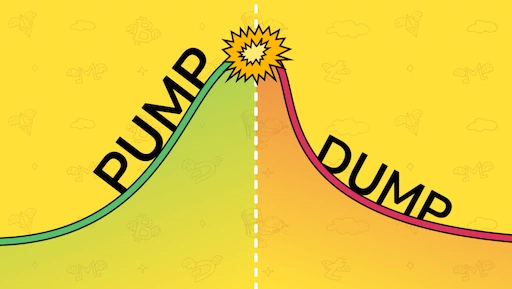The world of cryptocurrency is fast-paced, exciting, and, at times, incredibly lucrative. However, it’s also rife with risky investments and fraudulent projects. As the market grows, so does the number of tokens and platforms promising investors huge returns, only to fail spectacularly. These failures, whether they’re Ponzi schemes, rug pulls, or poorly designed projects, often lead to significant losses for investors.
In this post, we will explore some of the most notorious cryptocurrency token fails in recent years, detailing how they affected investors and the wider crypto ecosystem. We’ll also discuss the lessons learned from these failures and provide practical tips on how to avoid falling victim to similar schemes.
1. BitConnect: The Crypto Ponzi Scheme of the Century
One of the earliest—and most infamous—crypto scams was BitConnect. Launched in 2016, BitConnect operated as a high-yield investment platform that promised returns of up to 1% per day through a proprietary trading bot. Investors could purchase BitConnect tokens (BCC), which they then “lent” to the platform for daily payouts.
The Downfall:
BitConnect’s entire business model was based on a Ponzi scheme. The returns paid to earlier investors came directly from the funds of new investors, rather than any actual trading profits. As long as BitConnect continued to attract new participants, it could maintain the illusion of profitability. However, when new investment slowed, the platform collapsed.
In January 2018, BitConnect abruptly shut down its lending and exchange services. The value of BCC, which had once reached over $400, plummeted to nearly zero, leaving investors holding worthless tokens.
Impact on Investors:
- Thousands of investors, many of whom had invested their life savings, lost everything.
- The event drew widespread attention, damaging the public image of the cryptocurrency industry.
- BitConnect’s downfall led to increased scrutiny of high-risk crypto investments, particularly in unregulated markets.
Lesson Learned:
- High returns = high risk. If an investment promises guaranteed returns or extremely high profits, it’s a red flag.
- Do your research. Legitimate projects have clear, transparent business models, and most importantly, they don’t promise impossible returns.
- Watch out for “lending” schemes. Cryptocurrencies that ask you to lend your coins with the promise of daily returns are usually scams.
2. OneCoin: A Billion-Dollar Crypto Scam
Launched in 2014 by Ruja Ignatova, OneCoin promised to revolutionize cryptocurrency. The project marketed itself as the next Bitcoin, offering an ICO (Initial Coin Offering) to investors and the chance to purchase OneCoin tokens at a discounted price. However, OneCoin lacked any real blockchain technology or decentralized infrastructure. In reality, it was a massive Ponzi scheme designed to funnel money from new investors to the project’s creators.
The Downfall:
OneCoin’s value skyrocketed as it spread across social media, but its lack of transparency and actual technology soon became apparent. Ignatova, the self-styled “Cryptoqueen,” vanished in 2017, and the project collapsed soon after. Authorities uncovered that the majority of OneCoin’s funds had been funneled through a network of affiliates and brokers, leaving most investors with nothing.
The scheme defrauded investors of an estimated $5.4 billion, making it one of the largest scams in the history of cryptocurrency.
Impact on Investors:
- Investors, many of whom were lured by aggressive marketing and promises of incredible profits, lost billions.
- The collapse of OneCoin led to global investigations and arrests, with Ruja Ignatova still on the run.
- The incident highlighted the dangers of closed ecosystems—tokens that could only be traded within the project’s platform, with no liquidity outside it.
Lesson Learned:
- Transparency is key. A legitimate crypto project should have a public, open ledger (blockchain) and an active, verifiable community.
- Beware of “exclusive” platforms. If you can only trade a coin on its own exchange or platform, it’s often a warning sign.
- Don’t trust celebrity endorsements. Projects using celebrities or social media influencers for promotion often lack a solid foundation.
3. MT. Gox: The Exchange That Crashed
At one point, MT. Gox was the largest Bitcoin exchange in the world, handling around 70% of global Bitcoin transactions. The platform was initially founded in 2010 as a marketplace for trading Magic: The Gathering cards, but it pivoted to become a Bitcoin exchange in 2011. By 2013, MT. Gox was the go-to platform for Bitcoin trading.
The Downfall:
In 2014, MT. Gox filed for bankruptcy, revealing that hackers had stolen 850,000 Bitcoins (worth around $450 million at the time) from its wallets. The hack exposed severe security vulnerabilities, including poor internal controls and inadequate protection against cyber-attacks. MT. Gox’s management failed to act quickly enough to prevent the loss.
The exchange’s collapse shook the entire crypto ecosystem, leading to widespread panic and a loss of confidence in exchanges. It also caused a major spike in regulatory interest in cryptocurrency exchanges worldwide.
Impact on Investors:
- Around 24,000 users lost their Bitcoins, and many were unable to recover their funds.
- Investors who had trusted MT. Gox to hold their coins were left with nothing, leading to massive legal battles.
- The incident served as a warning about the risks of storing crypto on centralized exchanges.
Lesson Learned:
- Self-custody is safer. Never leave large amounts of cryptocurrency on exchanges. Use a hardware wallet for long-term storage.
- Choose exchanges with strong security practices. Opt for exchanges that are well-regulated and have a history of providing secure services.
- Diversify your holdings. Spread your assets across different wallets and exchanges to reduce risk.
4. Squid Game Token: A Classic Rug Pull
In 2021, the Squid Game token (SQUID) quickly became a viral sensation after the success of Netflix’s Squid Game. Promising rewards to holders based on the hit show’s theme, SQUID was launched with much fanfare and media attention.
The Downfall:
The token surged in price, reaching an all-time high of $2,856. However, the creators had set up a classic “rug pull” scheme. When the token’s value was at its peak, the developers drained the liquidity pool, causing the price to crash to nearly zero in a matter of hours.
The token’s creators disappeared, leaving investors with worthless tokens.
Impact on Investors:
- Many investors, especially new traders looking for quick gains, were burned by the sudden collapse.
- The rug pull further damaged the reputation of meme tokens and hype-driven projects.
- It also underscored the lack of regulatory oversight in crypto markets and the ease with which scam projects can be launched.
Lesson Learned:
- Avoid FOMO (Fear of Missing Out). Be cautious of tokens that spike in price due to viral marketing or media attention.
- Investigate the team behind the project. Anonymous or unverifiable teams are often a sign of a scam.
- Look for liquidity. If a project’s liquidity pool is too small or controlled by the creators, it’s likely a rug pull waiting to happen.
5. Terra Luna and the UST Collapse: A Stablecoin Disaster
In May 2022, the Terra Luna ecosystem, including its algorithmic stablecoin UST, experienced one of the most dramatic collapses in crypto history. The system relied on the Luna token to maintain the UST peg to the US dollar. When the UST began to lose its peg, Luna’s value plummeted, and the entire ecosystem collapsed.
The Downfall:
UST’s de-peg caused a massive sell-off in both UST and Luna. At its peak, the combined market capitalization of the Terra ecosystem was $60 billion, but it evaporated almost overnight. The collapse wiped out the savings of thousands of retail investors and triggered a wave of panic in the broader crypto market.
Impact on Investors:
- Billions of dollars were lost. Investors in both Luna and UST saw their holdings become worthless.
- Regulators took notice. The failure highlighted the risks of algorithmic stablecoins and spurred calls for stronger regulation in the crypto space.
Lesson Learned:
- Algorithmic stablecoins are risky. These coins rely on complex algorithms and can be highly vulnerable in volatile markets.
- Understand the collateralization mechanism. Make sure you understand how a token or stablecoin maintains its value.
- Diversify your holdings. Avoid putting all your funds into a single ecosystem or asset class.
How to Avoid Falling for Crypto Token Fails
To protect yourself from falling victim to failed tokens and scams, consider the following strategies:
- Do Your Own Research (DYOR): Always research a project thoroughly before investing. This includes reading the whitepaper, understanding the team, and verifying their track record.
- Check for Transparency: Legitimate projects are transparent about their technology, business model, and team. Avoid projects that lack these details.
- Use Reputable Platforms: Only trade on exchanges and platforms that are known for their reliability and security. Look for regulated platforms where possible.
- Be Cautious of High Yields: Promises of extraordinary returns are often too good to be true. If an investment sounds too good to be true, it probably is.
- Avoid “Pump-and-Dump” Tokens: Be wary of tokens that gain rapid attention due to social media trends or celebrity endorsements. These are often short-lived and risky.
Conclusion
The cryptocurrency market has seen its fair share of spectacular failures, from Ponzi schemes and rug pulls to unstable tokens and exchange hacks. While these projects caused significant losses for investors, they also provided critical lessons for the industry. By being cautious, doing your own research, and diversifying your investments, you can avoid falling victim to the next crypto disaster.
In a market as volatile as cryptocurrency, education and caution are your best tools for success. Don’t let the promise of quick riches blind you to the risks inherent in this fast-evolving space.
Invest wisely, stay informed, and always be skeptical of projects that promise the moon without offering real substance.











